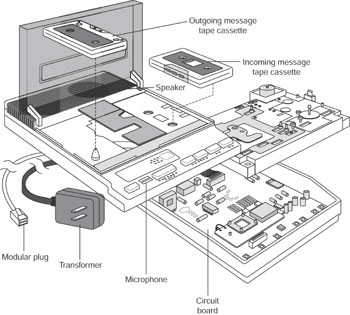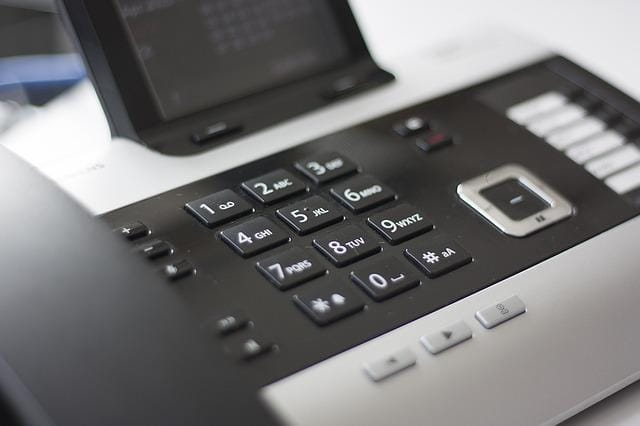All Categories
Featured
Table of Contents
- – A Better 14 Benefits Of A Telephone Answering S...
- – What Is The Best Telephone Answering Service S...
- – Best 14 Benefits Of A Telephone Answering Serv...
- – What Is The Best What Are Business Call Answe...
- – What Is The Best Phone Answering And Messagin...
- – What Is The Best What Is An Answering Servic...
A Better 14 Benefits Of A Telephone Answering Service In 2023?
This gadget and its followers were created by Sava Jacobson, an electrical engineer with a personal consulting company. While early answering makers utilized magnetic tape technology, most modern-day equipment uses strong state memory storage; some devices use a combination of both, with a solid-state circuit for the outbound message and a cassette for the incoming messages.
"toll saving" below) (virtual telephone answering). This works if the owner is evaluating calls and does not wish to consult with all callers. In any case after going, the calling celebration must be informed about the call having been responded to (most of the times this starts the charging), either by some remark of the operator, or by some greeting message of the little bit, or addressed to non-human callers (e.
This holds particularly for the Littles with digitally saved greeting messages or for earlier machines (prior to the increase of microcassettes) with an unique endless loop tape, different from a second cassette, devoted to recording. There have been answer-only gadgets without any recording capabilities, where the greeting message had to inform callers of a state of current unattainability, or e (phone answering).
What Is The Best Telephone Answering Service Sydney - Virtual Office Sydney To Buy Right Now

about schedule hours. In taping Little bits the welcoming typically consists of an invitation to leave a message "after the beep". A voice mail that utilizes a microcassette to record messages On a dual-cassette answerphone, there is an outgoing cassette, which after the specified variety of rings plays a pre-recorded message to the caller.

Single-cassette answering machines include the outgoing message at the start of the tape and incoming messages on the staying space. They initially play the statement, then fast-forward to the next available space for recording, then tape-record the caller's message. If there are numerous previous messages, fast-forwarding through them can trigger a considerable delay.
This beep is typically referred to in the greeting message, asking for that the caller leave a message "after the beep". TADs with digital storage for the tape-recorded messages do disappoint this delay, obviously. A little may provide a remote control facility, where the answerphone owner can ring the home number and, by getting in a code on the remote telephone's keypad, can listen to recorded messages, or erase them, even when far from home.
Best 14 Benefits Of A Telephone Answering Service In 2023 Prices Near Me

Consequently the maker increases the variety of rings after which it responds to the call (generally by 2, leading to 4 rings), if no unread messages are currently kept, but responses after the set number of rings (usually 2) if there are unread messages. This enables the owner to discover out whether there are messages waiting; if there are none, the owner can hang up the phone on the, e.
Some makers likewise enable themselves to be remotely activated, if they have been switched off, by calling and letting the phone ring a specific a great deal of times (typically 10-15). Some provider desert calls already after a smaller number of rings, making remote activation impossible. In the early days of TADs an unique transmitter for DTMF tones (dual-tone multi-frequency signalling) was regionally needed for push-button control, since the previously utilized pulse dialling is not apt to convey proper signalling along an active connection, and the dual-tone multi-frequency signalling was executed step-by-step.
Any inbound call is not recognizable with regard to these residential or commercial properties in advance of going "off hook" by the terminal equipment. So after going off hook the calls need to be switched to appropriate devices and only the voice-type is immediately accessible to a human, however possibly, nevertheless should be routed to a LITTLE (e.
What Is The Best What Are Business Call Answering Services? - Chalkboard For The Money
What if I informed you that you do not need to in fact get your gadget when responding to a customer call? Somebody else will. So convenient, ideal? Answering telephone call does not need someone to be on the other end of the line. Efficient automated phone systems can do the trick just as efficiently as a live agent and in some cases even much better.
An automated answering service or interactive voice response system is a phone system that interacts with callers without a live person on the line - business answering service. When business utilize this technology, consumers can get the response to a question about your business simply by utilizing interactions set up on a pre-programmed call flow.
Although live operators upgrade the client service experience, numerous calls do not require human interaction. A simple documented message or directions on how a customer can retrieve a piece of details normally solves a caller's immediate requirement - professional phone answering service. Automated answering services are a simple and effective way to direct inbound calls to the best individual.
What Is The Best Phone Answering And Messaging Service Product?
Notification that when you call a business, either for support or item query, the first thing you will hear is a pre-recorded voice greeting and a series of alternatives like press 1 for customer support, press 2 for queries, and so on. The pre-recorded alternatives branch off to other options depending upon the customer's selection.
The phone tree system assists direct callers to the right person or department utilizing the keypad on a smart phone. In some instances, callers can use their voices. It deserves keeping in mind that auto-attendant options aren't limited to the 10 numbers on a phone's keypad. As soon as the caller has picked their very first option, you can create a multi-level auto-attendant that uses sub-menus to direct the caller to the ideal sort of support.
The caller does not have to interact with a person if the auto-attendant phone system can handle their concern. The automatic service can path callers to a staff member if they reach a "dead end" and need help from a live agent. It is pricey to hire an operator or executive assistant.
What Is The Best What Is An Answering Service? Software?
Automated answering services, on the other hand, are substantially cheaper and supply significant cost savings at an average of $200-$420/month. Even if you don't have actually committed staff to deal with call routing and management, an automated answering service enhances efficiency by enabling your group to focus on their strengths so they can more effectively spend their time on the phone.
A sales lead routed to customer care is a lost shot. If a consumer who has product questions reaches the wrong department or receives incomplete answers from well-meaning employees who are less trained to manage a particular kind of concern, it can be a cause of aggravation and dissatisfaction. An automated answering system can reduce the number of misrouted calls, consequently assisting your staff members make better use of their phone time while freeing up time in their calendar for other jobs.
With Automated Answering Systems, you can produce a personalized experience for both your staff and your callers. Make a recording of your primary greeting, and merely update it regularly to reflect what is going on in your organization. You can develop as numerous departments or menu choices as you want.
Table of Contents
- – A Better 14 Benefits Of A Telephone Answering S...
- – What Is The Best Telephone Answering Service S...
- – Best 14 Benefits Of A Telephone Answering Serv...
- – What Is The Best What Are Business Call Answe...
- – What Is The Best Phone Answering And Messagin...
- – What Is The Best What Is An Answering Servic...
Latest Posts
Reputable Small Business Answering Service ( Australia)
Auto-attendant Answering Service – Canberra
Proven Virtual Assistant Phone Answering Near Me
More
Latest Posts
Reputable Small Business Answering Service ( Australia)
Auto-attendant Answering Service – Canberra
Proven Virtual Assistant Phone Answering Near Me